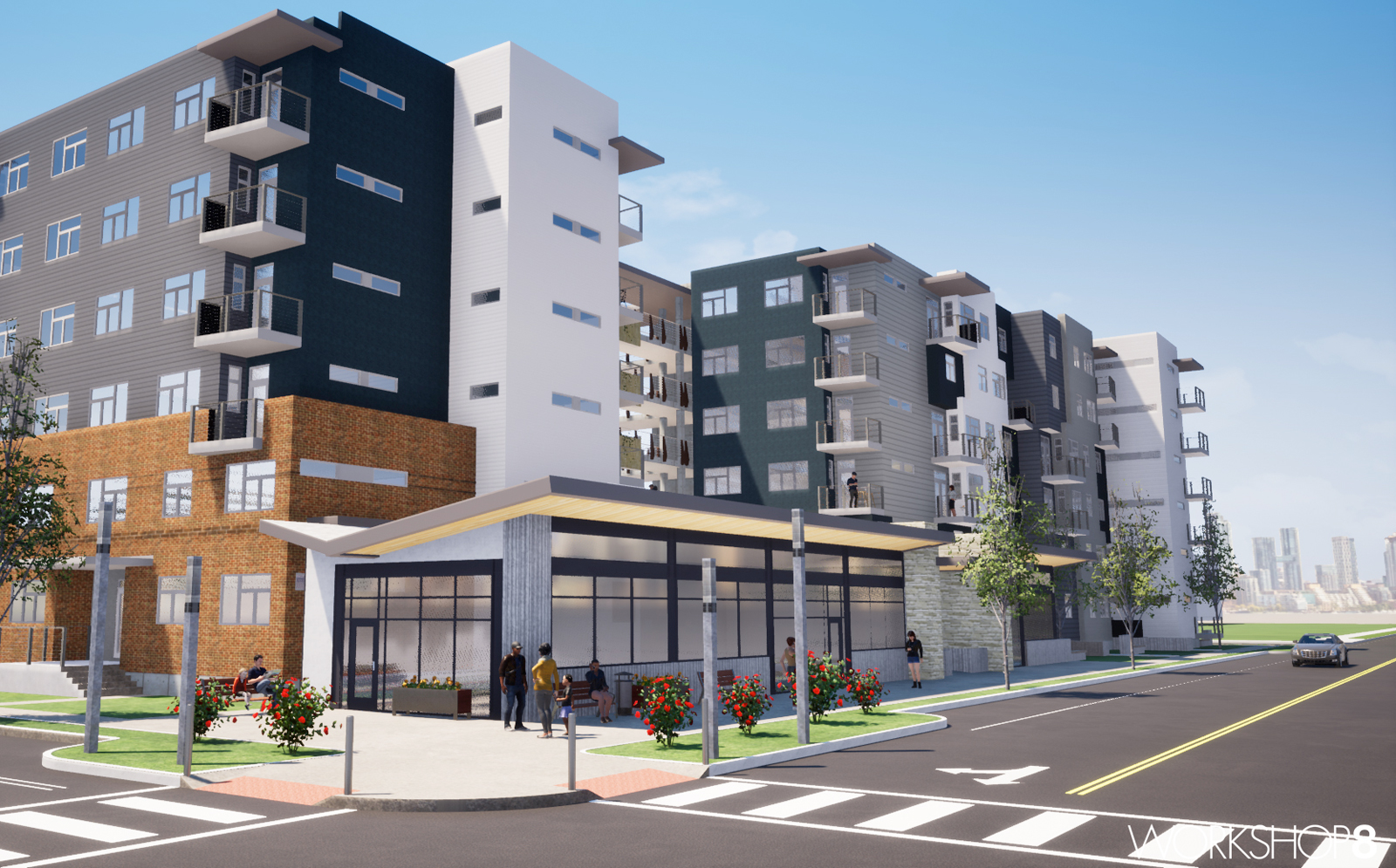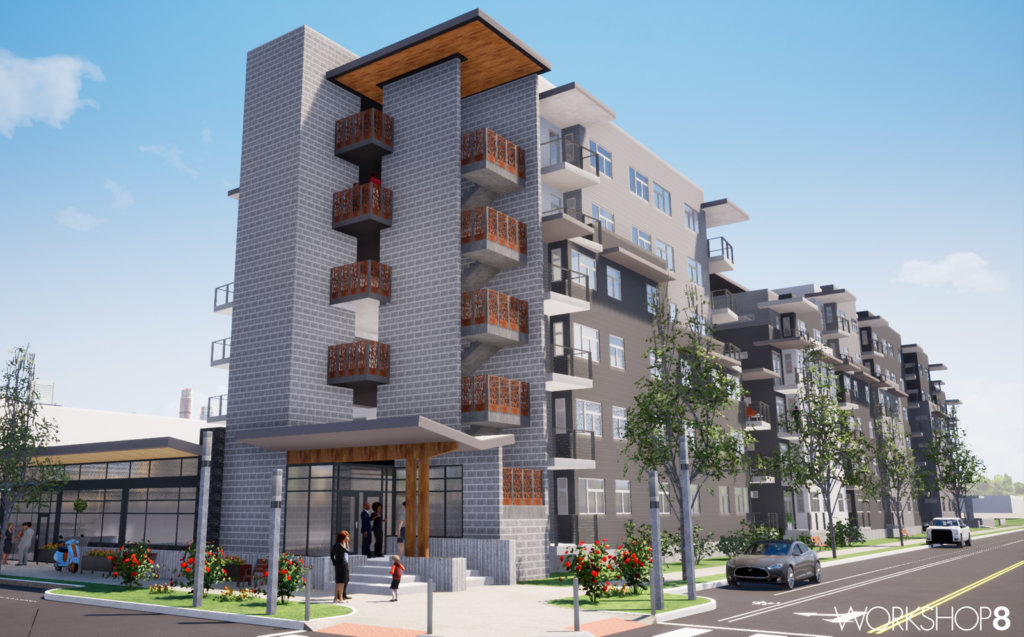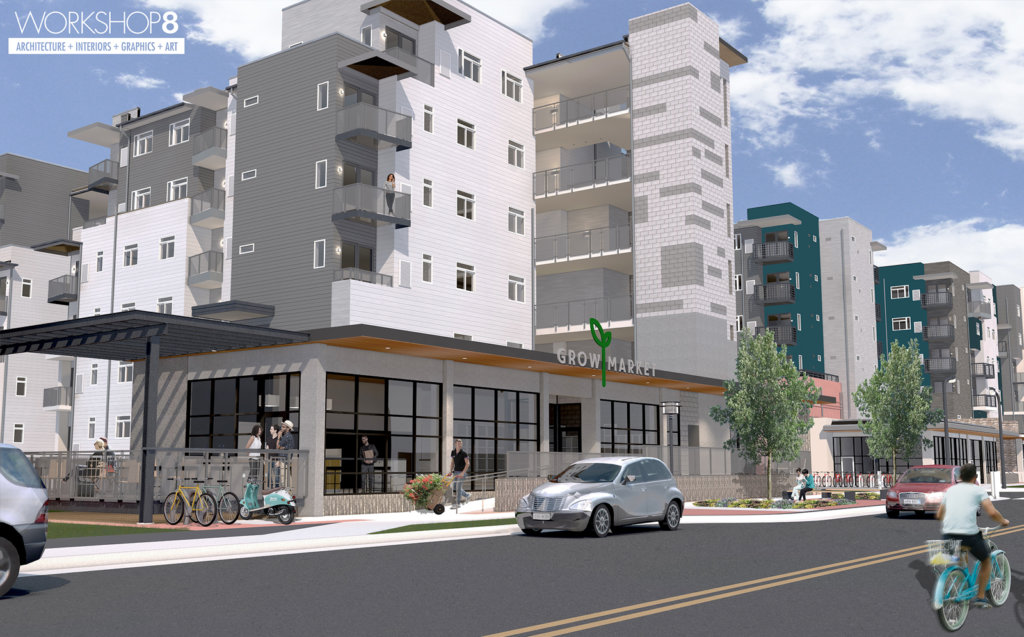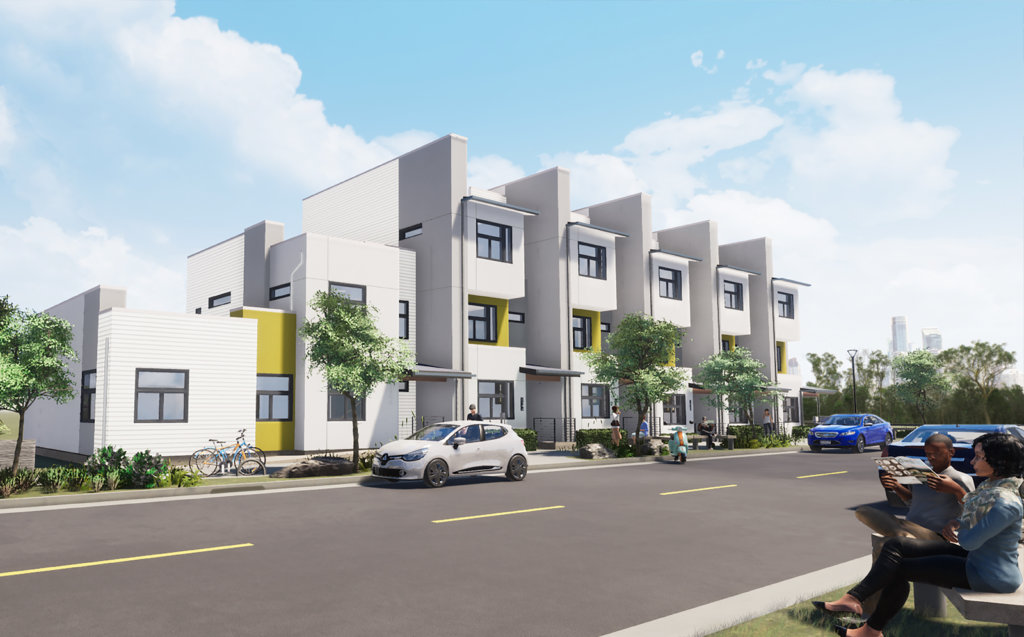December 22, 2020

WORKSHOP8 started in 2000 as VaST Architecture. Over the next eight years, VaST Architecture began to live up to its name, growing from founding principal Joseph Vigil working in rented desk space to a staff of five.
Overcoming the first hurdle
The infamous economic downturn of 2009 presented an obstacle to that growth that the staff hurdled in 2010 by joining forces with other sole proprietors.
To keep busy and skills sharp, the group entered a design competition for a 73-unit multifamily senior project in El Paso, Texas. This competition delivered way more than bragging rights to the winner. Firms vied for the job to build what they came up with. Stakes were as high as the urge to create the winning design. Yet, backed by a strong team, the win was in the bag.
Thus, the origin story of WORKSHOP8, a name that pays homage to the original 8 creators of that winning design. The team size has grown larger than eight since then, but the name has stuck.
Software choices
The chosen software the team had been using back then did not end up sticking, however. One of the requirements for that pivotal competition was the use of BIM – Building Information Modeling had its first burst of interest around that time. While the group that would eventually become known as WORKSHOP8 used Vectorworks, the experience taught them they needed a different way to work.
“Vectorworks BIM model didn’t give us the control that we needed to really generate a good set of drawings. Most of our sections and elevations were not fully tied into the BIM model so we would generate elevations and we’d essentially just draft over them, when anything changed we’d have to redraft stuff.”
Removing Reworks from the Workflow
That frustrating and consistent need to rework ate up valuable time. Vigil adds that the team needed a software that would scale well on larger projects, the multifamily housing and apartment buildings, where Workshop8 found its “sweet spot”. Much of its work today can be linked to that first design competition. The El Paso Housing Authority specified that the 73-unit senior housing project should be a net zero project. Funded in part by the American Recovery and Reconstruction Act – a stimulus package fund at the time, this first foray set the stage for the kind of work WORKSHOP8 has done since.
Cloud-based During COVID
WORKSHOP8 took advantage of Archicad cloud-based system in the nick of time, moving its server to cloud based in January 2020. Vigil says the team is being cautious about returning to bring the office back together to a pre-COVID situation.
“Office culture took a hit, because we had to let go of talking across the room to ask simple questions. The next big project is still on the horizon during COVID conditions. For now, our projects are either at the permit phase or already under construction. We are watching how low interest rates might influence affordable housing projects, because that historically is a good time to build. We are waiting on a couple of projects that are decent size, if those go forward we’ll probably be in good shape.”
The Gateway Project
Currently WORKSHOP8 is working on a big project for the Denver Housing Authority. Dubbed “Gateway” the project encompasses three different buildings clustered together. The first, Gateway North a 95-unit, six story structure features one, two, three, four, and five-bedroom configurations. Gateway South across the street will consist of 92 units of one, and two-bedroom units. Each building has commercial space as well and the third has a neighborhood grocery store or little market, roughly 2,000 Sq. Ft. Gateway North is on course to be completed by November of 2020. Gateway South should follow January 2021. The third building on the site, Gateway Row homes is six for sale row homes, including an ADA accessible row home and five three-story townhouses.

We’ve probably lost more time due to weather than we have to COVID, which is impressive.
Joseph Vigil, WORKSHOP8
Despite COVID restrictions and safety precautions Gateway moved forward – a benefit of having already been well under construction. Vigil explains, “The general contractor never batted an eye, he never once considered stopping or slowing down. On site temperature checks before anyone is allowed on site have kept things under control, with only two cases testing positive. We’ve probably lost more time due to weather than we have to COVID, which is impressive.”

Is it too early to really see any shift in the way that housing responds to a pandemic like COVID?
There’s a definite focus on resident health and wellbeing, and goal for architects to integrate health in some form or another in their buildings.
Joseph Vigil, WORKSHOP8
“We experimented on the Gateway project, building on our knowledge of the Colorado climate – typically 300 plus sunny days annually.”
Gateway is part of a redevelopment plan for a section of Denver known as the Sun Valley neighborhood. The goal was to redevelop an area that had 300 plus living units developed in the forties and fifties, fifties, and sixties. Vigil describes how the team responded to conversations with residents to develop a design that would maintain what they loved about their neighborhood while moving forward with redeveloping the units themselves.

“One thing that we took away from those conversations was how much value front doors and back doors hold for these residents. With multifamily housing, open corridors, even up on the sixth floor can make the apartment building feel more house-like. Everything is open, there is no interior common space as part of the circulation of the building itself. When you park your car and you go and you get on an elevator, you’ll go up to the fifth or sixth floor of wherever and you’re essentially still outside until you get to your front door, you unlock it and then you go into your unit. Then all units also have decks off the back, so we were trying to create that front and back door feel so that it didn’t feel like a high-rise apartment building.”
The design began before COVID but stands up to a method of physical distancing through architecture one can be excused for considering prophetic. The way the building itself is set up helps in keeping any spreads from happening, when all other individual best practices for hygiene and personal responsibility are applied.
Changing Design for Affordable Housing
Taking that resident feedback and applying it to design – making it part of the process at WORKSHOP8 makes sense according to Vigil.
“There’s a broad range of multifamily and affordable housing types in Denver and beyond. Working with the Denver Housing Authorities helps us access a very progressive approach to neighborhoods. There’s a definite focus on resident health and wellbeing, and goal for architects to integrate health in some form or another in their buildings.”
WORKSHOP8 embraces strategies to improve wellbeing as an architectural feature of multifamily housing such as creating stairways that are fun to be in. Integrating art in stairways to a focal point, so that elevators become secondary access. In this way, stairways can create social interaction providing space for neighbors to be friendly with neighbors while getting physical activity. Vigil says the firm also factors in the way the building fits in the site.

“Considering the entire neighborhood and the level of how walkable things are – those kinds of things that we really enjoy integrating into the buildings. What is the life experience, the day to day experience of all of our residents? Denver Housing Authority also puts a focus on mixed income projects, to counteract the stigma of living in ‘affordable housing’.”
Teamwork Functionality a Fave Feature
What was once a luxury perk – being able to work from home – has become an essential feature of staying in business for WORKSHOP8. All this time in Archicad led Vigil to name his favorite feature in Archicad. Hands down, he credits the teamwork function in part to the firm’s success and adds it was the single biggest decision-making features of the software when it came time to select a software.
“Looking back at it six years later, that is the function that has allowed us to literally stay in business. The teamwork function where we can have 12 people working from different locations on the same file at the same time seamlessly is huge. That’s allowed us to weather this COVID storm. If we didn’t have that technology today I really don’t know how we could have survived.”
Archicad also provides Vigil and his team a solid platform to support exchange of project information through IFC. They report no issues when sub consultants are fully on the IFC bandwagon. We do still on occasion work with stakeholders operating in the 2D world instead of in a BIM environment like we do.
[Archicad’s Teamwork] has allowed us to weather this COVID storm. If we didn’t have that technology today I really don’t know how we could have survived.
Joseph Vigil, Workshop8
“Those that have fully embraced BIM tend to be easier to coordinate with. We are hopeful that as BIM becomes more prevalent through the structural and MEP world that, that’ll become less of an issue.”